
Pogonomyrmex colei is a species of workerless inquiline ant in the subfamily Myrmicinae native to California, Nevada, and Arizona that parasitizes Pogonomyrmex rugosus nests.

Veromessor is a genus of ants in the subfamily Myrmicinae. The genus was previously classified as a synonym of Messor, but was revived as a genus by Ward et al. (2015).

Tyrannomyrmex rex is a species of ant in the subfamily Myrmicinae native to Malaysia and Singapore.

Brachymyrmex depilis is a species of Formicine ant native to North America.

Camponotus mina is a species of carpenter ant native to large parts of northern Mexico, California, Arizona, Texas, and New Mexico, and possibly Wyoming, South Dakota, and Minnesota.
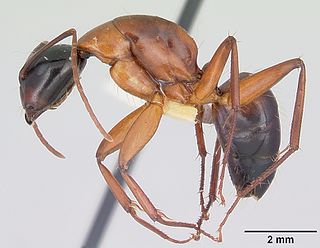
Camponotus texanus is a species of carpenter ant native to Texas, Nuevo Leon, and possibly Arizona.

Hypoponera punctatissima, or Roger's ant, is a species of Ponerine ant native to Africa but now found worldwide as a tramp species.

Camponotus discolor is a species of carpenter ant native to the eastern United States, North Dakota, Nebraska, Texas, Kansas, Oklahoma, Nuevo Leon, Tamaulipas, and possibly California, Montana, Utah, and Colorado.
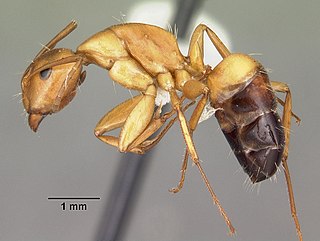
Camponotus snellingi is a species of carpenter ant native to the southeastern United States and possibly Arizona.
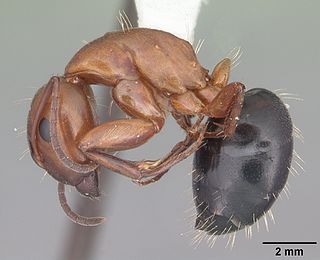
Camponotus decipiens is a species of carpenter ant native to the eastern United States, North Dakota, Nebraska, Kansas, Colorado, Texas, Tamaulipas, Nuevo Leon, San Luis Potosi, and possibly Utah, Arizona, Sonora, and California. The specific epithet of the scientific name, decipiens, comes from Latin "dēcipiens", meaning "decieving, cheating, or trapping".

Camponotus chromaiodes, known generally as, the ferruginous carpenter ant or red carpenter ant, is a species of carpenter ant native to the eastern United States, Nebraska, Kansas, and possibly California. Acetobacteraceae are found in the guts of workers in this species.
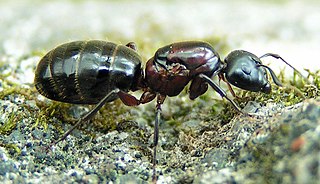
Camponotus novaeboracensis, the New York carpenter ant, is a species of carpenter ant native to the United States, Canada, possibly found in Costa Rica, Malaysia, and invasive in Bermuda.

Pogonomyrmex desertorum, the large seed harvesting ant, is a species of harvester ant native to Mexico, the southwestern United States, and possibly Florida and Colorado.
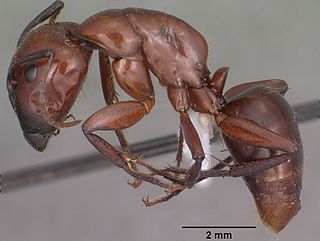
Camponotus schaefferi is a species of carpenter ant native to Arizona, New Mexico, and possibly Venezuela.

Camponotus subbarbatus. also known as the bearded carpenter ant, is a species of carpenter ant native to eastern North America.

Camponotus clarithorax is a species of carpenter ant of the subgenus Camponotus native to California, Oregon, the Baja California Peninsula, and possibly the eastern United States. This species is found in Oregon, California, and Baja California.

Camponotus sericeiventris, the shimmering golden sugar ant, is a species of carpenter ant native to large parts of Central and South America. It is the only species in the subgenus Myrmepomis.

Camponotus absquatulator is a species of carpenter ant native to California, Nevada, and Baja California. It was separated from the Camponotus festinatus complex in 2006 by Roy Snelling.

Camponotus acutirostris is a species of carpenter ant native to Utah, Arizona, New Mexico, Texas, Chihuahua, and Baja California.

Camponotus trepidulus is a species of carpenter ant native to Arizona, New Mexico, Baja California, Nayarit, Aguascalientes, and the State of Mexico.





















